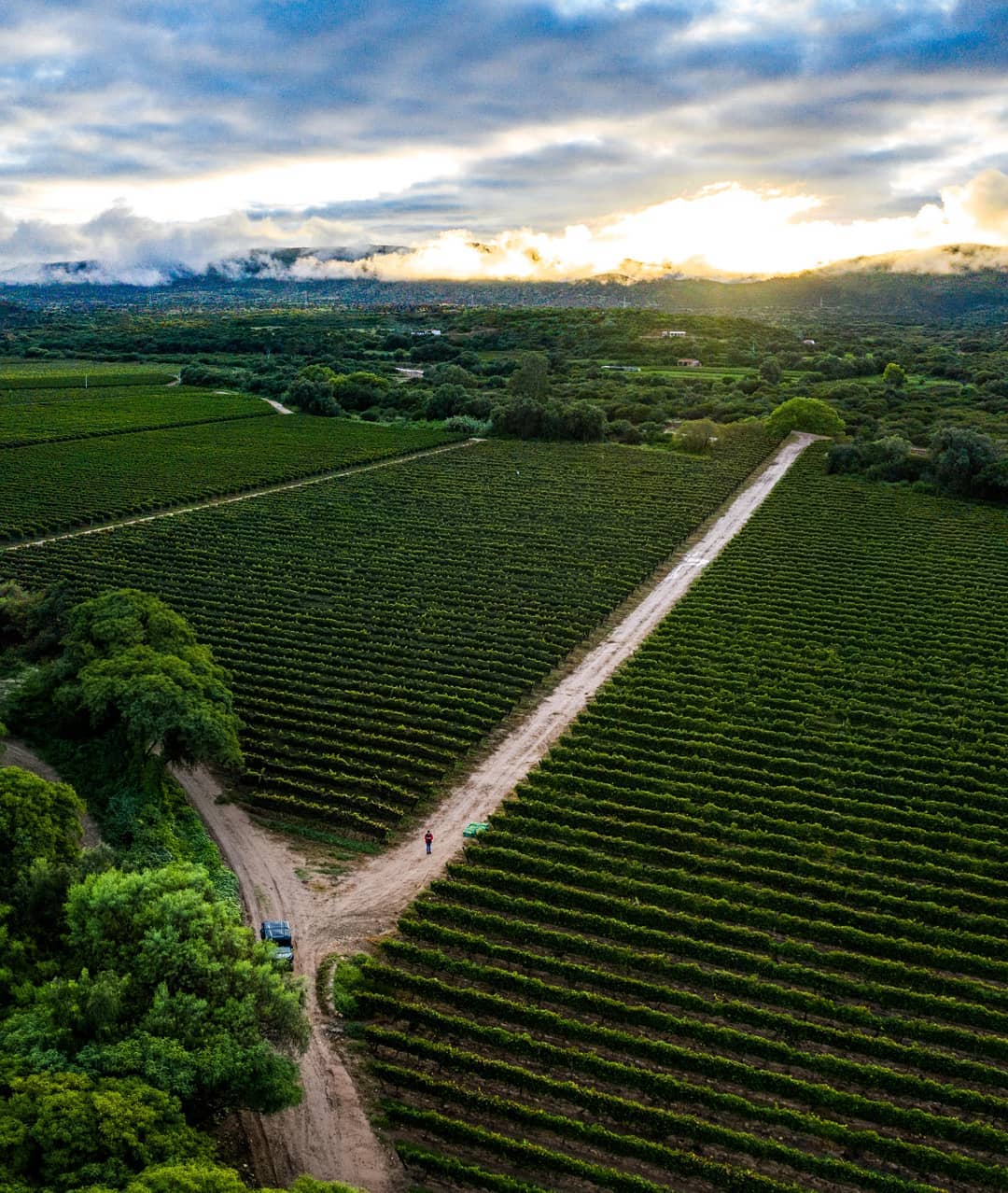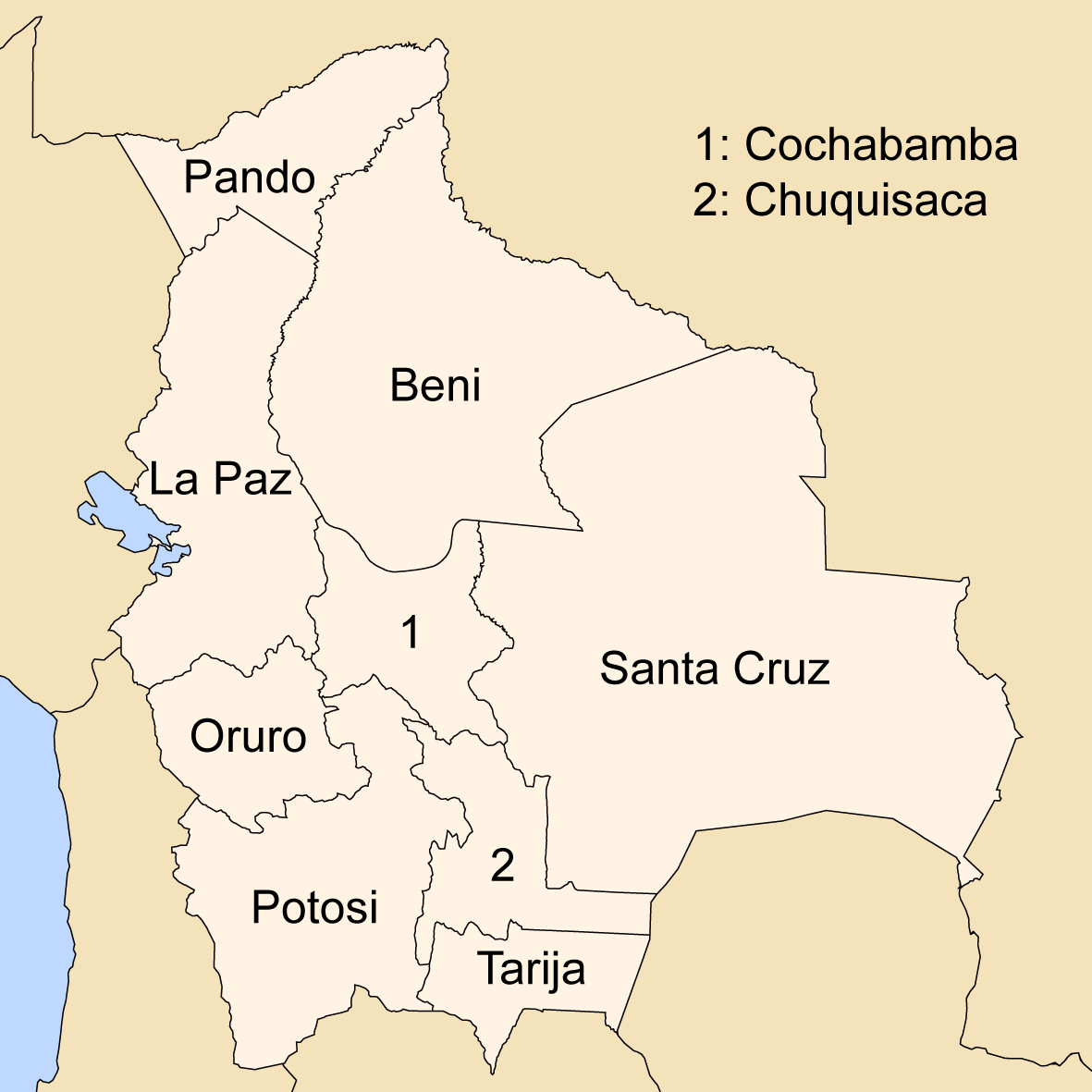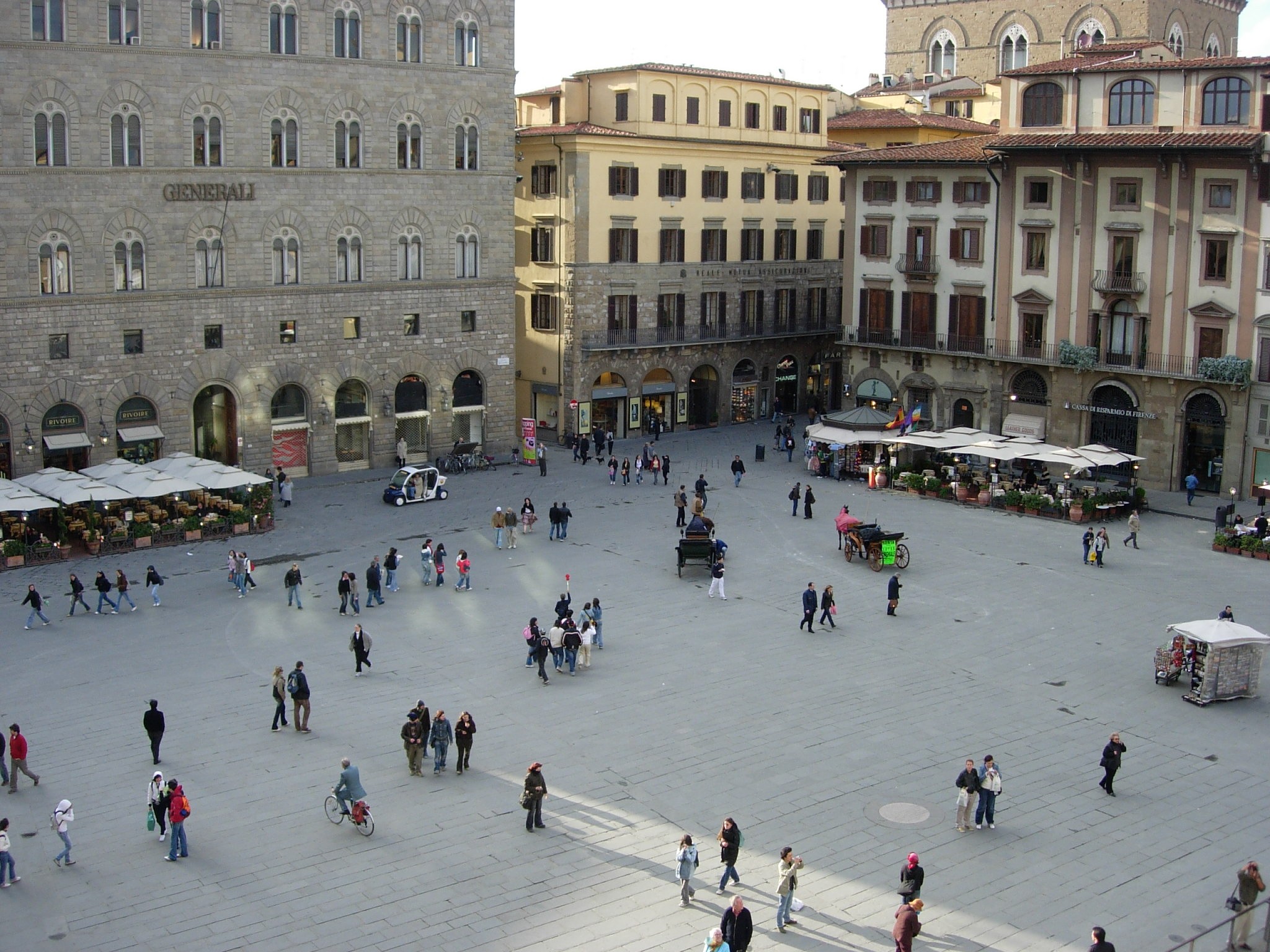|
Tupiza
Tupiza is a city in Potosí Department, Bolivia. It is located at an elevation of about 2850 m. The population is 25,709 (2012 estimate). Tupiza and its environs are characterized by dramatic red escarpments which jut ruggedly skyward from the coarse, gray terrain; green agricultural land adjacent to the nearby Tupiza River provides welcome respite from the otherwise arid, thorny surroundings. The area ''quebradas'' are susceptible to flash flood runoff from sudden cloudbursts. Tupiza is the capital of the Sud Chichas Province within the Potosí Department. It is accessible via bus from Villazón to the south (and thereby both Argentina and Tarija) and Potosí to the north, as well as via the north-south train which served the mining settlements and runs the same route. From Tupiza, various towns in the local mining districts are accessible, as is the Salar de Uyuni. Legend has it that Butch Cassidy and the Sundance Kid Harry Alonzo Longabaugh (1867 – November 7, 1908) ... [...More Info...] [...Related Items...] OR: [Wikipedia] [Google] [Baidu] |
Sud Chichas Province
Sud Chichas (or: ''Sur Chichas'') is a province in the Bolivian department of Potosí. Its seat is Tupiza. Location Sud Chichas province is one of sixteen provinces in the Potosí Department. It is located between 20° 51' and 21° 50' South and between 65° 15' and 66° 30' West. It borders Nor Chichas Province in the north, Antonio Quijarro Province in the north-west, Nor Lípez Province and Sur Lípez Province in the west, the Republic of Argentina and Modesto Omiste Province in the south, Tarija Department in the south-east, and Chuquisaca Department in the east. The province extends over 130 km from east to west and from north to south. Division The province comprises two municipalities which are further subdivided into cantons A canton is a type of administrative division of a country. In general, cantons are relatively small in terms of area and population when compared with other administrative divisions such as counties, departments, or provinces. Inter ... [...More Info...] [...Related Items...] OR: [Wikipedia] [Google] [Baidu] |
Provinces Of Bolivia
A province is the second largest administrative division in Bolivia, after a department. Each department is divided into provinces. There are 112 provinces. The country's provinces are further divided into 337 municipalities which are administered by an alcalde and municipal council. List of provinces Beni Department Chuquisaca Department Cochabamba Department La Paz Department Oruro Department Pando Department Potosí Department Santa Cruz Department Tarija Department See also * Departments of Bolivia Bolivia is a unitary state consisting of nine departments ( es, departamentos). Departments are the primary subdivisions of Bolivia, and possess certain rights under the Constitution of Bolivia. Each department is represented in the Plurinatio ... * Municipalities of Bolivia Sources Instituto Nacional de Estadística - Bolivia(Spanish) {{Articles on second-level administrative divisions of South American countries S ... [...More Info...] [...Related Items...] OR: [Wikipedia] [Google] [Baidu] |
Potosí Department
Potosí (; Aymara: ''Putusi''; qu, P'utuqsi) is a department in southwestern Bolivia. It comprises 118,218 km2 with 823,517 inhabitants (2012 census). The capital is the city of Potosí. It is mostly a barren, mountainous region with one large plateau to the west, where the largest salt flat in the world, Salar de Uyuni, is located. Cerro Potosí was the richest province in the Spanish empire, providing a great percentage of the silver that was shipped to Europe. Potosi is also the location of the San Cristóbal silver, zinc and lead mines, developed by the US-company Apex Silver Mines Limited of Colorado and in November 2008 sold to the Japanese Sumitomo Corporation. Government The chief executive office of Bolivia departments (since May 2010) is the governor; until then, the office was called the prefect, and until 2006 the prefect was appointed by the President of Bolivia. The current governor, Esteban Urquizu Cuéllar of the Movement for Socialism – Political I ... [...More Info...] [...Related Items...] OR: [Wikipedia] [Google] [Baidu] |
Tarija, Bolivia
Tarija or San Bernardo de la Frontera de Tarixa is a city in southern Bolivia. Founded in 1574, Tarija is the largest city and capital and municipality within the Tarija Department, with an airport ( Capitán Oriel Lea Plaza Airport, (TJA)) offering regular service to primary Bolivian cities, as well as a regional bus terminal with domestic and international connections. Its climate is semi-arid ( BSh) with generally mild temperatures in contrast to the harsh cold of the Altiplano (e.g., La Paz) and the year-round humid heat of the Amazon Basin (e.g., Santa Cruz de la Sierra). Tarija has a population of 234,442. History The name of ''Tarija'' is said to come from Francisco de Tarija or Tarifa. However, researched information disproves that probability. Members of the first group of Spaniards to enter the valley where present-day Tarija is situated, stated that the name of Tarija was already in use. This group did not include anyone by the name of Francisco de Tarija. Similar- ... [...More Info...] [...Related Items...] OR: [Wikipedia] [Google] [Baidu] |
Butch Cassidy
Robert LeRoy Parker (April 13, 1866 – November 7, 1908), better known as Butch Cassidy, was an American train and bank robber and the leader of a gang of criminal outlaws known as the " Wild Bunch" in the Old West. Parker engaged in criminal activity for more than a decade at the end of the 19th century and the early 20th century, but the pressures of being pursued by law enforcement, notably the Pinkerton detective agency, forced him to flee the country. He fled with his accomplice Harry Longabaugh, known as the "Sundance Kid", and Longabaugh's girlfriend Etta Place. The trio traveled first to Argentina and then to Bolivia, where Parker and Longabaugh are believed to have been killed in a shootout with the Bolivian Army in November 1908; the exact circumstances of their fate continue to be disputed. Parker's life and death have been extensively dramatized in film, television, and literature, and he remains one of the most well-known icons of the "Wild West" mythos in mo ... [...More Info...] [...Related Items...] OR: [Wikipedia] [Google] [Baidu] |
The Sundance Kid
Harry Alonzo Longabaugh (1867 – November 7, 1908), better known as the Sundance Kid, was an outlaw and member of Butch Cassidy's Wild Bunch in the American Old West. He likely met Butch Cassidy (real name Robert Leroy Parker) during a hunting trip in 1883 or earlier. The "Wild Bunch" gang performed the longest string of successful train and bank robberies in American history. Longabaugh fled the United States along with his consort Etta Place and Butch Cassidy to escape the dogged pursuit of the Pinkerton Detective Agency. The trio fled first to Argentina and then to Bolivia, where most historians believe Parker (Cassidy) and Longabaugh were killed in a shootout in November 1908. Early life Longabaugh was born in Mont Clare, Pennsylvania, in 1867 to Pennsylvania natives Josiah and Annie G. () Longabaugh, the youngest of five children. At age 15, he traveled west in a covered wagon with his cousin George to help settle George's homestead near Cortez, Colorado. While th ... [...More Info...] [...Related Items...] OR: [Wikipedia] [Google] [Baidu] |
Countries Of The World
The following is a list providing an overview of sovereign states around the world with information on their status and recognition of their sovereignty. The 206 listed states can be divided into three categories based on membership within the United Nations System: 193 UN member states, 2 UN General Assembly non-member observer states, and 11 other states. The ''sovereignty dispute'' column indicates states having undisputed sovereignty (188 states, of which there are 187 UN member states and 1 UN General Assembly non-member observer state), states having disputed sovereignty (16 states, of which there are 6 UN member states, 1 UN General Assembly non-member observer state, and 9 de facto states), and states having a special political status (2 states, both in free association with New Zealand). Compiling a list such as this can be a complicated and controversial process, as there is no definition that is binding on all the members of the community of nations conc ... [...More Info...] [...Related Items...] OR: [Wikipedia] [Google] [Baidu] |
Departments Of Bolivia
Bolivia is a unitary state consisting of nine departments ( es, departamentos). Departments are the primary subdivisions of Bolivia, and possess certain rights under the Constitution of Bolivia. Each department is represented in the Plurinational Legislative Assembly—a bicameral legislature consisting of the Senate and the Chamber of Deputies. Each department is represented by four Senators, while Deputies are awarded to each department in proportion to their total population. Out of the nine departments, La Paz was originally the most populous, with 2,706,351 inhabitants as of 2012 but the far eastern department of Santa Cruz has since surpassed it by 2020; Santa Cruz also claims the title as the largest, encompassing . Pando is the least populated, with a population of 110,436. The smallest in area is Tarija, encompassing . Departments Former Departments By population Notes See also * ISO 3166-2:BO, the ISO codes for the departments of Bolivia. * Boliv ... [...More Info...] [...Related Items...] OR: [Wikipedia] [Google] [Baidu] |
Potosi Department
Potosí or Potosi may refer to: Places United States * Potosi, Missouri, in Washington County * Potosi, Nevada, a ghost town in Clark County, Nevada * Potosi, Texas, in Taylor County * Potosi (town), Wisconsin, in Grant County ** Potosi, Wisconsin, a village within the Town of Potosi Elsewhere * Potosí, the capital of Potosí Department, Bolivia, a UNESCO World Heritage Site * Potosí Department, a department in southwestern Bolivia * Potosi, Venezuela, a disestablished town in Táchira * San Luis Potosí City, capital and most populous city of San Luis Potosí, Mexico Mountains * Potosi Mountain (Nevada), U.S. * Potosí mountain range or ''Cordillera de Potosí'', to the southeast of the city of Potosí, Bolivia * Potosi Peak, in the Sneffels Range, Colorado, US * Cerro de Potosí, a mountain near the city of Potosí, Bolivia, also known as ''Cerro Rico''; a Spanish colonial mining site * Cerro Potosí, a mountain in Nuevo León, Mexico * Huayna Potosí, a mountain in t ... [...More Info...] [...Related Items...] OR: [Wikipedia] [Google] [Baidu] |
Bolivia
, image_flag = Bandera de Bolivia (Estado).svg , flag_alt = Horizontal tricolor (red, yellow, and green from top to bottom) with the coat of arms of Bolivia in the center , flag_alt2 = 7 × 7 square patchwork with the (top left to bottom right) diagonals forming colored stripes (green, blue, purple, red, orange, yellow, white, green, blue, purple, red, orange, yellow, from top right to bottom left) , other_symbol = , other_symbol_type = Dual flag: , image_coat = Escudo de Bolivia.svg , national_anthem = " National Anthem of Bolivia" , image_map = BOL orthographic.svg , map_width = 220px , alt_map = , image_map2 = , alt_map2 = , map_caption = , capital = La Paz Sucre , largest_city = , official_languages = Spanish , languages_type = Co-official languages , languages ... [...More Info...] [...Related Items...] OR: [Wikipedia] [Google] [Baidu] |
Flash Flood
A flash flood is a rapid flooding of low-lying areas: washes, rivers, dry lakes and depressions. It may be caused by heavy rain associated with a severe thunderstorm, hurricane, or tropical storm, or by meltwater from ice or snow flowing over ice sheets or snowfields. Flash floods may also occur after the collapse of a natural ice or debris dam, or a human structure such as a man-made dam, as occurred before the Johnstown Flood of 1889. Flash floods are distinguished from regular floods by having a timescale of fewer than six hours between rainfall and the onset of flooding. Flash floods are a significant hazard, causing more fatalities in the U.S. in an average year than lightning, tornadoes, or hurricanes. Flash floods can also deposit large quantities of sediments on floodplains and can be destructive of vegetation cover not adapted to frequent flood conditions. Causes Flash floods most often occur in dry areas that have recently received precipitation, but th ... [...More Info...] [...Related Items...] OR: [Wikipedia] [Google] [Baidu] |
Plaza Principal De Tupiza
A town square (or square, plaza, public square, city square, urban square, or ''piazza'') is an open public space, commonly found in the heart of a traditional town but not necessarily a true geometric square, used for community gatherings. Related concepts are the civic center, the market square and the village green. Most squares are hardscapes suitable for open markets, concerts, political rallies, and other events that require firm ground. Being centrally located, town squares are usually surrounded by small shops such as bakeries, meat markets, cheese stores, and clothing stores. At their center is often a well, monument, statue or other feature. Those with fountains are sometimes called fountain squares. By country Australia The city centre of Adelaide and the adjacent suburb of North Adelaide, in South Australia, were planned by Colonel William Light in 1837. The city streets were laid out in a grid plan, with the city centre including a central public square, Vict ... [...More Info...] [...Related Items...] OR: [Wikipedia] [Google] [Baidu] |







